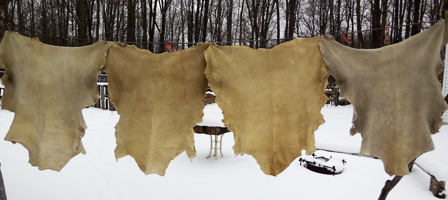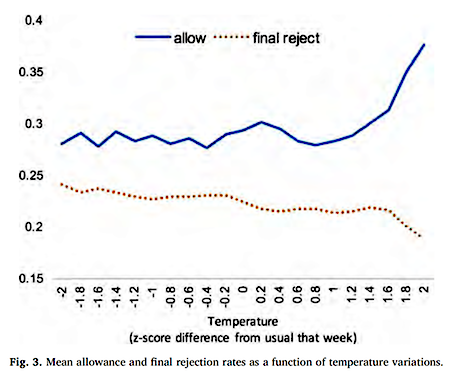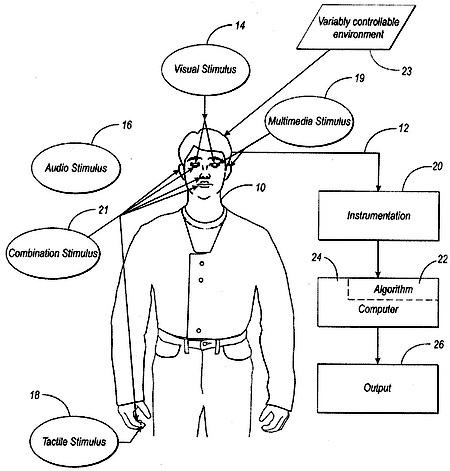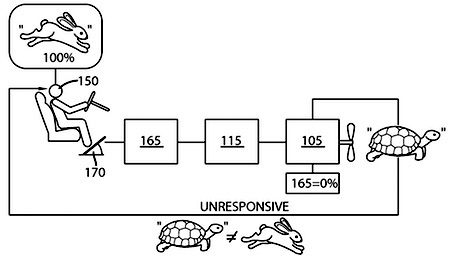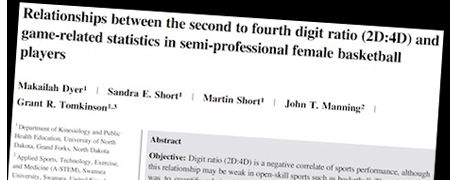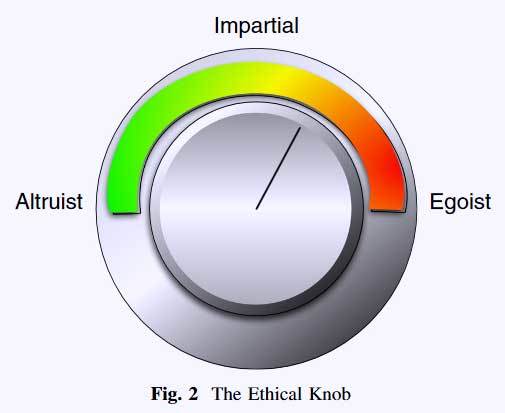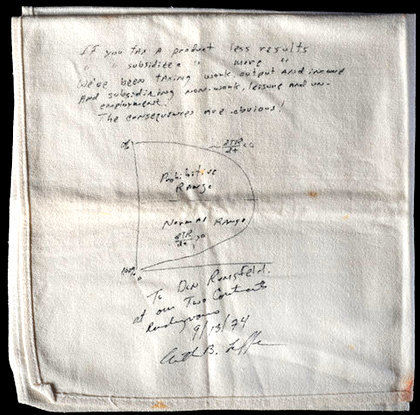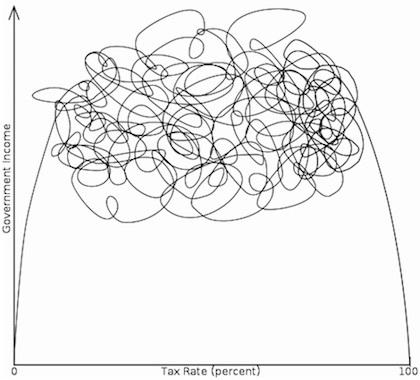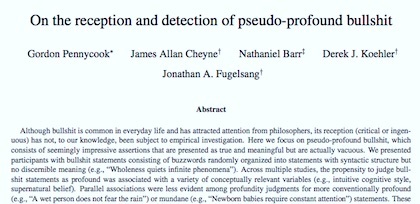Marc Abrahams's Blog, page 207
October 19, 2017
“Impossible attempts” in law (new study)
Imagine this scenario :
A poacher arrives at an area where there are wild deer, intent on shooting one – but it’s out of season, so it’s illegal to do so. He takes a shot at a deer and hits it – unknown to him though, it’s actually a stuffed replica put there by the gamekeeper. The question now arises – ‘Has the would-be poacher committed a crime?’
Such an event really did happen*, and the implications are discussed by Professor Daniel B. Yeager (Californian Western School of Law) in a new paper for Faculty Scholarship, 206, entitled: Stuffed Deer and the Grammar of Mistakes. The professor discusses the concept of so-called ‘Impossible attempts’ which have had a formal, though somewhat esoteric definition in [US] law since 1864. Here are some examples of ‘impossible attempts’ from a previous paper on the subject :
As described in: Constructing a theory of impossible attempts Criminal Justice Ethics, 5:1, 53-69.
Note * State v. Guffey, 1953 262 S.W.2d 152 (Mo. Ct. App. 1953). The case centered around the idea that the deer which the defendant shot could not have been “pursued, taken, killed, possessed or disposed of” since it was in fact already dead and had been stuffed.

October 18, 2017
What is Brain Tan?
These people use brains to tan leather.
“What is Braintan? Braintan is an ancient method of tanning hides that involves dressing a raw hide with brains, (or other natural emulsified oils) softening it with manual labor to produce soft buckskin and smoking it to preserve the softness.”
So says the web site of Circle S Leather, which also says: “We are a family run business. We work out of our home and a small shop. Because God has blessed our business, over the last 15 years our braintan has sold in 46 states and 13 countries.”

Patents (De)pending on Weather
Inventors have reason to squirm a bit over the weather, suggests this new study about the granting — or rejection — of patents. The study is:
 “Too hot to reject: The effect of weather variations on the patent examination process at the United States Patent and Trademark Office,” Balázs Kovács [pictured here], Research Policy, vol. 46, no. 10, December 2017, Pages 1824-1835. (Thanks to Barbara Ribeiro and Phil Shapira for bringing this to our attention.)
“Too hot to reject: The effect of weather variations on the patent examination process at the United States Patent and Trademark Office,” Balázs Kovács [pictured here], Research Policy, vol. 46, no. 10, December 2017, Pages 1824-1835. (Thanks to Barbara Ribeiro and Phil Shapira for bringing this to our attention.)
The author, at Yale University, explains:
“This paper documents a small but systematic bias in the patent evaluation system at the United States Patent and Trademark Office (USPTO): external weather variations affect the allowance or rejection of patent applications. I examine 8.8 million reject/allow decisions from 3.5 million patent applications to the USPTO between 2001 and 2014, and find that on unusually warm days patent allowance rates are higher and final rejection rates are lower than on cold days. I also find that on cloudy days, final rejection rates are lower than on clear days. I show that these effects constitute a decision-making bias which exists even after controlling for sorting effects, controlling for applicant-level, application-level, primary class-level, art unit-level, and examiner- level characteristics. The bias even exists after controlling for the quality of the patent applications. While theoretically interesting, I also note that the effect sizes are relatively modest.”
Here’s graphic detail from the study:

October 17, 2017
Keith Raniere’s inventive patents
Keith Raniere, whose inventive uses of human beings are, some of them, profiled in the New York Times under the headline “Inside a Secretive Group Where Women Are Branded“, has filed unusual patent applications. Here are three of those patent applications that relate to things other than branding women.
“Determination of whether a luciferian can be rehabilitated“ [Application US20130281879A1, the current status of which is “pending”] sets forth “a method for determining whether a Luciferian can be rehabilitated. The method includes stimulating the Luciferian with a first stimulus and recording a first physiological response by the Luciferian to said first stimulus. The method includes determining, from the first physiological response, a first polarity of the Luciferian’s response to the first stimulus. The method includes stimulating the Luciferian with a second stimulus and recording a second physiological response by the Luciferian to said second stimulus. Further, the method includes determining, from the second physiological response, a second polarity of the Luciferian’s response to the second stimulus.” And so on.
That patent application contains this drawing, which perhaps summarizes the idea as clearly as is possible:
“Rational inquiry sash“ [US design grant USD469594S1, now expired] included this drawing, which explains the concept of a rational inquiry sash as well or better than does the text that accompanies it in the document on file with the patent office:
“Apparatus and method for preventing a vehicle from running out of fuel“ [application US20140277920A1, status “granted”] attacks a simple problem by making it into a complicated problem. This is the problem, as the patent application describes it: “A vehicle may run out of fuel if the driver is preoccupied or forgetful to refuel. An operator may be left stranded far from any location where he can obtain more fuel. Currently, vehicles contain a fuel gauge which displays the level of fuel for an operator to attempt to prevent this unfortunate scenario. However, a fuel gauge on a vehicle may read empty when there is still fuel remaining in the vehicle. This may condition the operator to disregard the warning and continue to drive the vehicle, sometimes to the point where the fuel actually does run out.”
The patent application includes this summary, in the form of a drawing, of the proposed solution to that problem:
These are just three of the many patent applications filed by Keith Raniere, whose interests and ambitions may be unique.
Keith Raniere has a company called NXIVM. The company’s name is a summary, perhaps clear in some way, of its activities. Many of Keith Raniere’s patents are assigned (in the filings with the US patent office) to a company called First Principles, Inc., which in its paperwork appears to be geared towards selling things to the US government. Another of Keith Raniere’s organizations says “Keith Raniere holds many titles to his name—scientist, mathematician, philosopher, entrepreneur, educator, inventor and author—but perhaps the most poignant among them is that of humanitarian.”
Keith Raniere is the subject of many popular YouTube videos.

A more powerful sports statistics tool
A more powerful statistical tool is available for sports analysts, potentially displacing traditional measures based on old-fashioned body-dimension (height, weight, etc.), or sport-specific performance (speed, scoring, passing, etc.). The statistic is displayed in a newly published research report:
“Relationships Between the Second to Fourth Digit Ratio (2D:4D) and Game-Related Statistics in Semi-Professional Female Basketball Players,” Makailah Dyer, Sandra E. Short, Martin Short, John T. Manning and Grant R. Tomkinson, American Journal of Human Biology, epub 2017.
The researchers explain:
“Using a cross-sectional design, 64 female basketball players who competed in the South Australian Premier League were measured in-season for height, mass, and 2D:4D, with game-related statistics collected end-season…. Female players with lower digit ratios tended to perform better in several aspects of basketball, especially defensively, and were more likely to be starters, suggesting they are the best players on the team in their positions.”
This researchers here include John T. Manning, the father of finger-length studies.
This study, together with the large and growing collection of other studies by Professor Manning and his colleagues, furthers the dream that statistics — in the proper hands — can tell us anything about everything.

October 16, 2017
He recommends you read the book The Ig Nobel Prizes. So do we.
Adrian Wallwork explains, in this video, why he recommends that his students read the book The Ig Nobel Prizes. We recommend that, too. (Too, we recommend to you The Ig Nobel Prizes 2.)

Blank pages in 18th century books (study)
Anyone who’s seen the phrase “This page has intentionally been left blank” and who has been left thinking that it’s a relatively modern construct – think again. Intentionally blank pages have been around, in abundance, since at least the 18th century. Dr. Anne Toner (Trinity College Cambridge, UK), has extensively researched varieties of incompleteness in literary works, and covers the blank page in : “Blank Emblems: The Vacant Page, the Interleaved Book and the Eighteenth-Century Novel”, Word and Image 22.4, 2006, 363-71. Explaining that, in some cases at least :
“The vacant page makes explicit, then, the failure of correlation between imagination and manifestation in a text that seems to do all it can to proliferate the processes of narrative communication. “
The blank page shown above is from an edition of The Life and Opinions of Tristram Shandy, Gentleman (first published in 1759). It was deliberately inserted so as to provide a space for readers to do their own illustrations. Many other literary works of the time had blank pages so that readers could make their own non-fictional notes. To the extent that for some years it became almost fashionable to do so. The author cites one work from 1639 that had 125 blank pages – more than a third of the entire volume.
Question [optional] Is it time to revive the fashion for blank pages? Justify your answer.
Also see: Empty Photographic Frames : Punctuating the Narrative

October 15, 2017
The Ethical Knob: ethically-customisable automated vehicles and the law (new study)
Vehicles could be fitted with what they call an ‘Ethical Knob’, under a proposal by Giuseppe Contissa, Francesca Lagioia, and Giovanni Sartor of CIRSFID, at the University of Bologna, Italy. The device might help clarify ethical/legal issues with Autonomous Vehicles (AVs). What for example, should a self-driving car do when it ‘realizes’ (in an impending crash situation) that it could swerve to avoid a large group of pedestrians but in the process kill the driver and passengers?
Before a journey starts, the driver could set the knob to Altruist | Impartial | Egoist (or anywhere in between) and the AV would take the appropriately-weighted action in the case of an emergency.
The authors point out that the idea of the Ethical Knob can be viewed either from a Utiliarian or a Rawlsian perspective:
“The Rawlsian approach could appear more acceptable if we assume that the disutilities being considered represent personal injuries having the same probability, but different gravity. For example, assume that 0,6l is the quantification of the damage from paraplegia (the loss of the use of both legs) and that 0,3l corresponds to the loss of the use of one leg. Assume that by proceeding the AV would cause with certainty the pedestrian to become paraplegic, while by swerving it would cause with certainty each one of three passers-by to lose one leg each. Then it might be argued—though this conclusion is very debatable—that swerving is preferable to proceeding, on grounds of equity/equality.”
See: The Ethical Knob: ethically-customisable automated vehicles and the law Artificial Intelligence and Law, September 2017, Volume 25, Issue 3, pp 365–378.
Also see: from Giovanni Sartor : Why Lawyers Are Nice (or Nasty)

October 14, 2017
Pseudo-profound bullshit commemorated: The Laffer Curve
Today the New York Times celebrates, deadpan, a fake relic of a historically influential example of pseudo-profound bullshit. Under the headline “This Is Not Arthur Laffer’s Famous Napkin,” The Times says:
It is one of the iconic moments in modern economics: A young professor named Arthur Laffer sketched a curve on a bar napkin in 1974 to show an aide to President Gerald R. Ford why the federal government should cut taxes.
The Laffer Curve became famous; the Republican Party became the party of tax cuts; and, in 2015, the Smithsonian announced that it was putting the napkin on display.
But the napkin now celebrated for starting a tax revolt is not, in fact, the original napkin….
Although some politicians claimed to take the Laffer Curve seriously (thus leading to their claimed reverence for a replica napkin), mathematicians, economists, and the world in general delighted in pointing out that it was nonsense.
Martin Gardner, the Scientific American columnist, destroyed the Laffer curve illusion, in one of his final columns. Martin also is the person whose advice started me on my writing career. I wrote this about that, when Martin died:
My own favorite of Martin’s works is the final column he wrote for Scientific American — a deadly, hilariously efficient dissection of a gold-plated piece of nonsense. That final column was called “The Laffer curve and other laughs in current economics” [Scientific American, December, 1981, vol. 245, pp. 18-31]. It drew wrathful, spittle-flecked letters from people who bought their intellectual fashion items at The Emperor’s New Clothes shop. “No economist has the foggiest notion of what a Laffer curve really looks like except in the neighborhood of its endpoints,” the column says. One of that column’s lovely technical drawings is reproduced below (thanks to Wikipedia).
That final column itself [you can read it online] is reproduced in the book The Night Is Large, a collection of many of Martin’s best writings.
In celebrating anew the Laffer curve, pretending that it corresponds to reality, some politicians (and perhaps the New York Times?) unintendedly also celebrate the 2016 Ig Nobel Peace Prize.
The 2016 Ig Nobel Peace Prize was awarded to Gordon Pennycook, James Allan Cheyne, Nathaniel Barr, Derek Koehler, and Jonathan Fugelsang for their scholarly study called “On the Reception and Detection of Pseudo-Profound Bullshit.” [That paper was published in the journal Judgment and Decision Making, vol. 10, no. 6, November 2015, pp. 549–563.]

October 13, 2017
Downstream reactions from the 4-legged periodic table table
From Mark Peplow’s review, in the journal Nature, of the new book by Ig Nobel Prize-winner Theo Gray:
Gray’s career as a chemical evangelist began in 2002, when he misread a line in Oliver Sacks’s Uncle Tungsten (Knopf, 2001) and imagined the periodic table of elements as a literal table. A skilled woodworker, Gray decided to build it and stock cavities beneath each symbol with samples of the elements.
Then, he recalls, “things really got out of hand” (go.nature.com/2fdcm9b). The table won the 2002 Ig Nobel Prize in Chemistry, and spawned a cottage industry: Gray now sells periodic-table posters, books and quilts, and makes museum displays. With photographer Nick Mann, he has amassed a gallery of element photos, showcased in his 2009 book The Elements. Its sequel, Molecules, followed in 2014; Reactions is the final part of the trilogy (all published by Black Dog & Leventhal)….

Marc Abrahams's Blog
- Marc Abrahams's profile
- 14 followers



